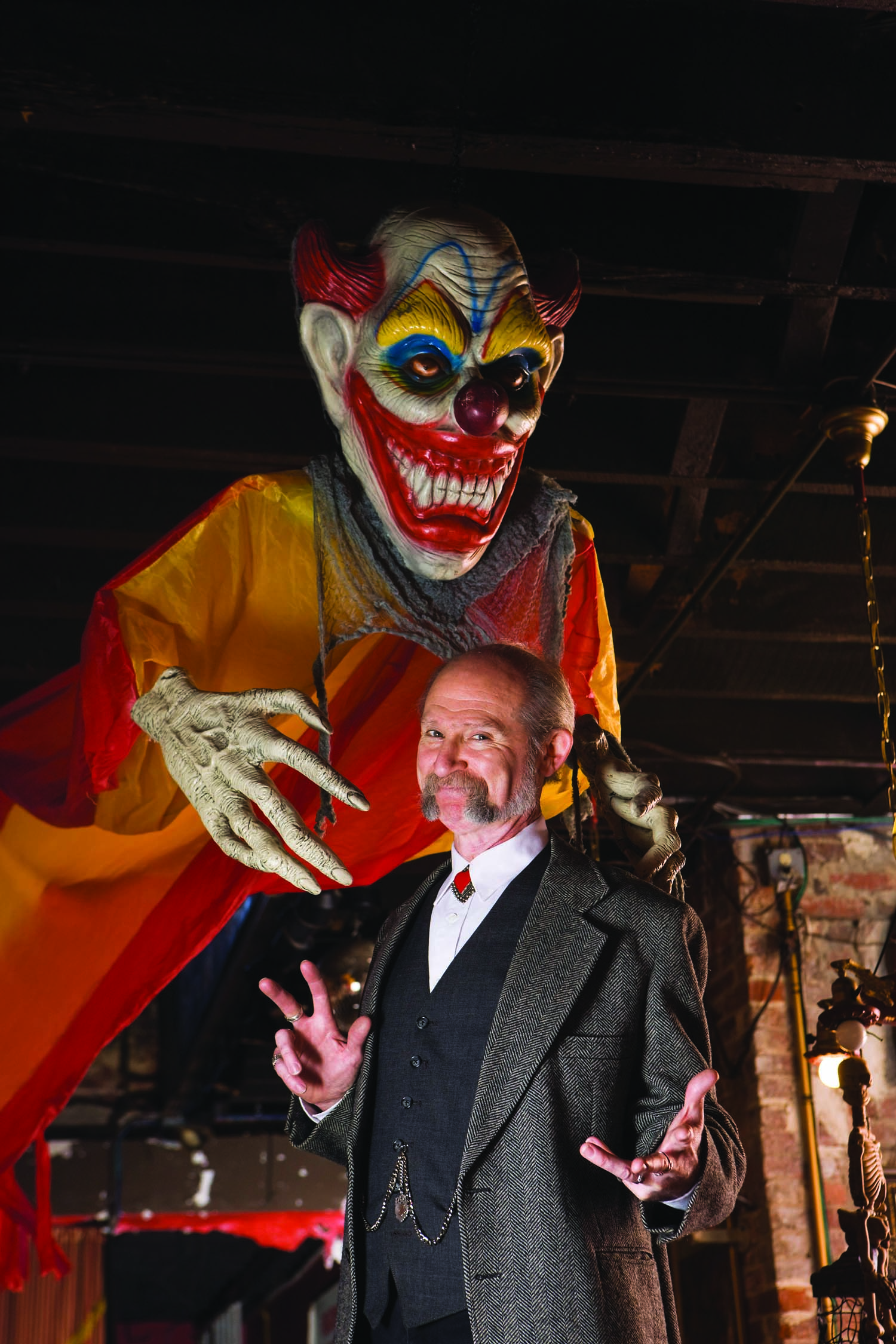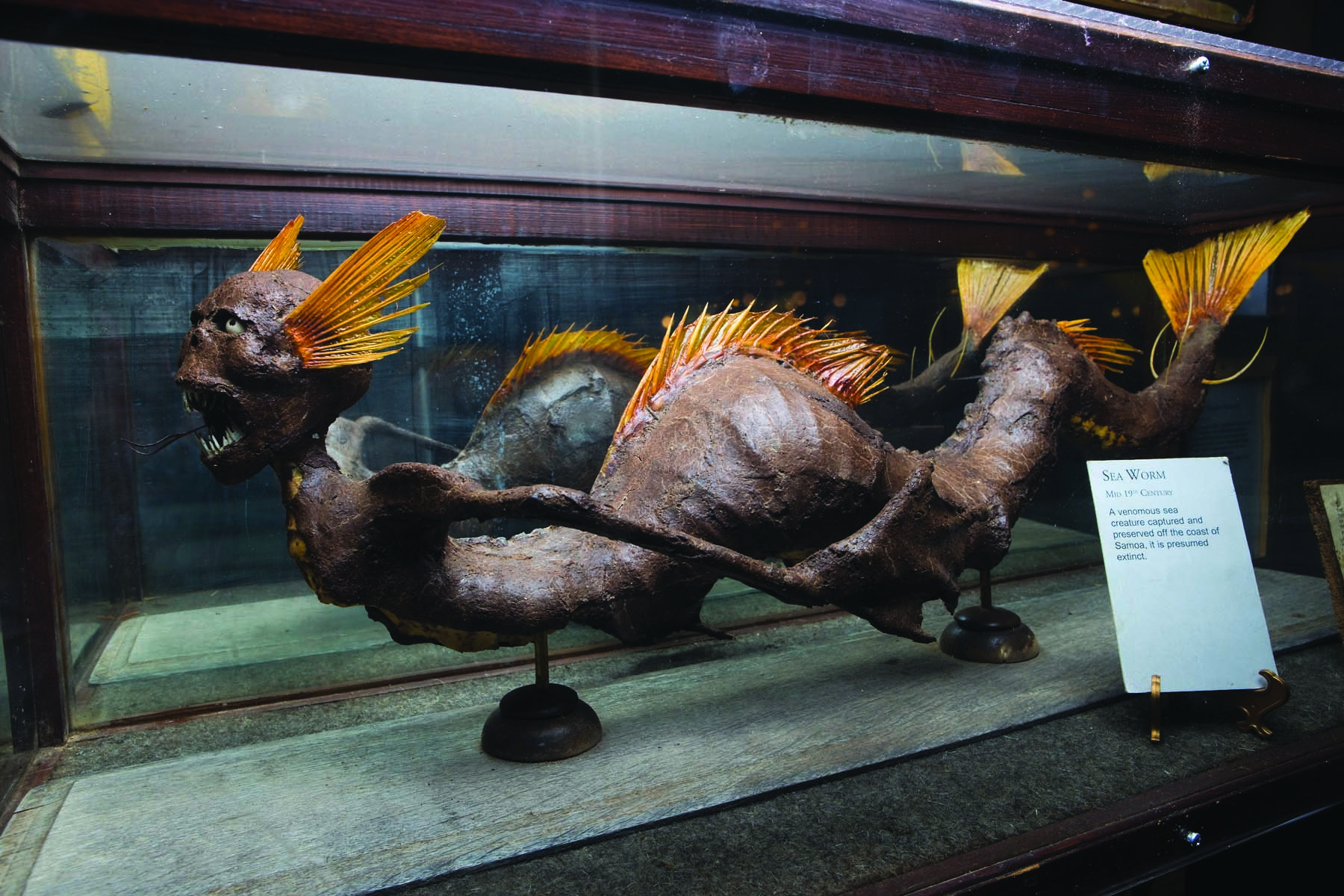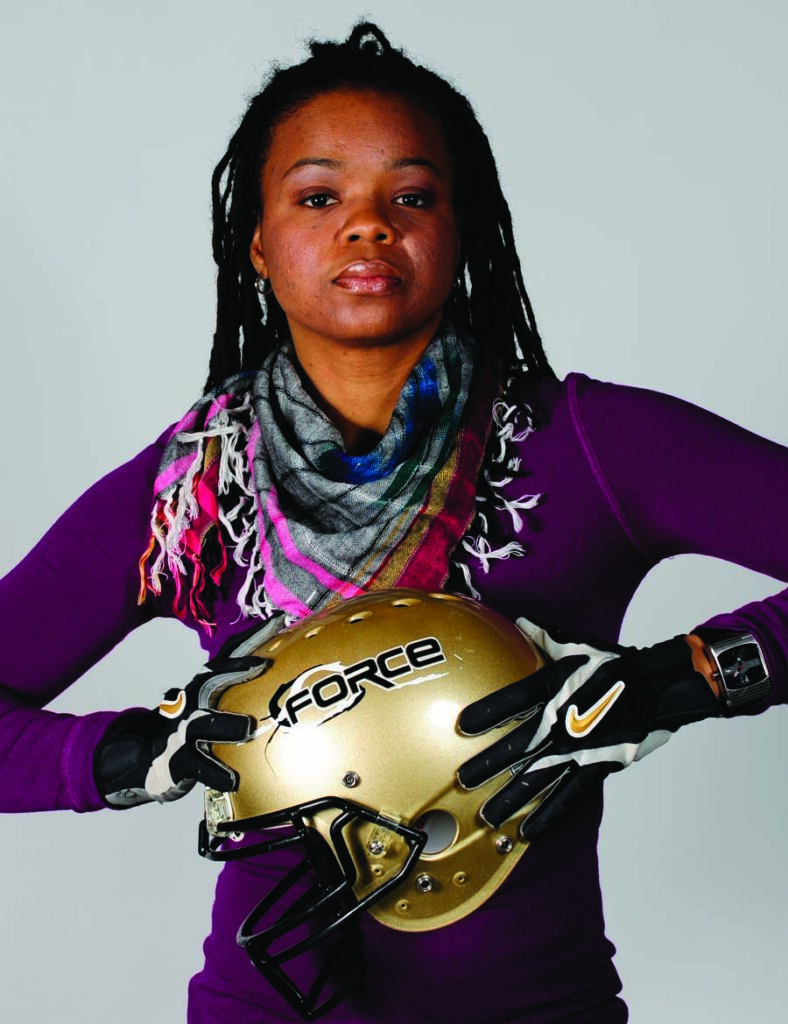Sideshows featuring amazing feats and astonishing freaks became an industry in the United States in the 19th century. But these traveling caravans have been on the endangered list in recent decades. Collecting the artifacts and celebrating the artistry of this vanishing industry has proven addictive to James Taylor ’73, interdisciplinary studies.
Taylor’s magazine about the sideshows – James Taylor’s Shocked and Amazed! On & Off The Midway – has been featured prominently in The Washington Post, The New York Times and The Baltimore Sun. His collection of sideshow memorabilia was the backbone of Baltimore’s late, lamented American Dime Museum, and it can now be seen as you sip a beer at one of Washington D.C.’s hippest taverns: the Palace of Wonders.
UMBC Magazine asked Taylor why he loves the sideshow – and keeps its manifold wonders in the public eye.
Why do I love sideshow and its talent: all the sword swallowers and magicians and knife throwers and jugglers and ventriloquists and fire breathers and human blockheads?
There’s an easy answer: Because it’s a kick, a rush, a thrill. Tell me anyone doesn’t get a bit of an adrenaline surge watching Zamora the Torture King launch into his body-skewering and literally electrifying (himself, that is) act? I once watched two guys – big as linebackers, the pair of them – pass out stone cold, falling over at the ankles while watching Zamora’s act. Another time, I watched a young girl, staring hard at his final stunt, sit and weep, her eyes never leaving his. Who wouldn’t be shocked and amazed at that show?
But there’s a more complicated answer, too. It might seem strange to most folk. It’s all about the love that these performers have for their craft and their audiences.
Whenever I deliver my “writing in the real world” spiel to a classroom of students, I tell them that you have to decide first what you love, and then whether you can (or even want to) make a buck off it. I don’t mean to be crass, but this is America: You better be makin’ the moolah, or you’re just un-American, some poor loser.
That’s a particularly brutal – and unlovely – life assessment for many creative folk in this country. But I make that judgment because I’ve seen that interplay of love and money at work – up close, alive, livin’ and breathin’, right in front of me – in the lives of the people who still work the midways. It’s a sight I’ll remember till the longest day I live, as the old-time sideshow guys used to say.
These oddball jugglers, hula hoop manipulators and fire breathers will tell you flat out that they’re in it for the money… which they’re not making. They’re starving to death. They’re limping along at best. Many of them can’t figure out how they’re going to make it to the next show.
Most people would ask: “Then why do you keep doin’ it?”
One of the best answers was told to me by showman Mark Frierson many years ago. When he mounted and trouped out his first show, Frierson told me he had so much fun while he made his money that he couldn’t believe that what he was doing was legal.
Not that there aren’t trials. Sideshow folk talk endlessly about how horrific things are now or were in the past. My ma’s late boyfriend, carnival owner Jerry Farrow, owned a monkey show back in the ‘50s, a show with an assortment of monks, all of which escaped from the barn he’d housed them in, all of which ran riot throughout Glen Burnie for about a week, and all of which were shot dead by police before Jerry’s – and Glen Burnie’s – nightmare ended. A horrifying story by today’s standards, not so in the 1950s when I grew up. And in the telling, it remained one of Jerry’s most uproarious tales, a tale of near financial ruin for him but always hilarious despite that.
The wild stories are verbal armor against more truly horrific circumstances they face almost every day. But what you hear even more than that in these over-the-top, half-fabricated-for-entertainment-effect tales – the carnival folk call them “jackpots” – is the obvious love and the outrageous passion that these show people have for the work they do.
Take the late Jeanie Tomaini, a performer born with literally nothing below her waist. In her heyday in the 1930s and ’40s, she was billed as “the World’s Only Living Half Girl.” Put “on show” by her desperately poor parents, and later “adopted” by an evil stepmother from the orphanage where Jeanie’s father had abandoned her after her mother died, Jeanie only escaped the stepmother’s clutches when she married fellow freak performer Al Tomaini, “the American Giant.” Of course, they were billed as “the World’s Strangest Married Couple.”
When I met her toward the end of her life, I asked her what it meant to be a freak act in the sideshows. After hearing all that life drama, I asked her how she’d sum up such a life. Jeanie looked me dead in the face and with a grin said: “I had a ball.”
That’s why I love this weirdness that doubles as entertainment. I love knowing there’s a business, a world, where people so love what they do – entertaining us – that, even though they often pretend otherwise, they would work just for the thrill of thrilling us.
And while it may seem strange, weird, bizarre, exotic or unusual to you, love can look all of those ways sometimes, now can’t it?
Tags: Winter 2010




